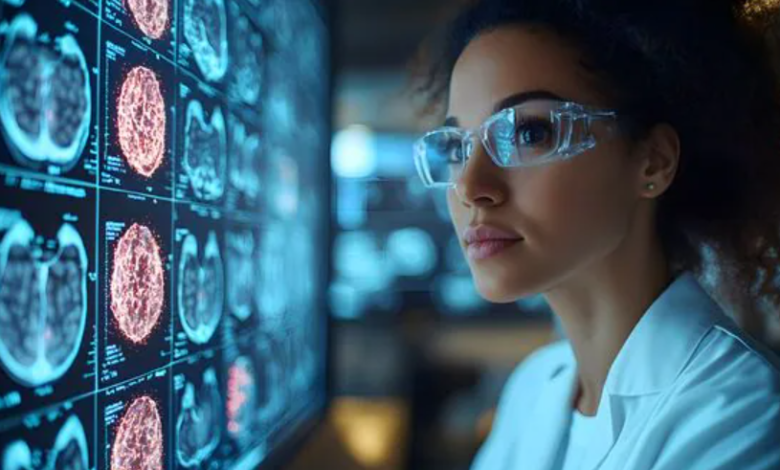The Power of MRI: Transforming Diagnostics with Precision

In the modern era of healthcare, early diagnosis is key to saving lives and improving patient outcomes. Among the most effective diagnostic tools available today is mri, or magnetic resonance imaging. This non-invasive imaging technique has revolutionized the medical landscape, enabling doctors to see deep within the human body with unmatched clarity. Whether detecting neurological issues or monitoring organ health, mri plays a central role in many medical journeys—especially in technologically advanced healthcare systems like Hong Kong.
What Is MRI and How Does It Work?
MRI is an imaging technique that uses strong magnetic fields and radio waves to produce detailed images of the body’s internal structures. Unlike X-rays and CT scans, mri does not use ionizing radiation, making it a safer option for long-term monitoring and repeated imaging.
The scanner aligns hydrogen atoms in the body using a powerful magnet. Radio waves then disturb this alignment, and as the atoms return to their original state, they emit signals. These signals are captured and converted into cross-sectional images of organs and tissues.
Common Uses of MRI in Medical Practice
MRI has become a cornerstone of diagnostics across various medical disciplines. Here’s how it’s used:
1. Brain and Nervous System
MRI is the preferred method for diagnosing neurological conditions such as brain tumors, strokes, multiple sclerosis, and spinal cord injuries. It offers high-resolution images of the brain and spinal cord, essential for accurate treatment planning.
2. Orthopedic Imaging
In musculoskeletal medicine, mri helps visualize joints, cartilage, ligaments, and muscles. It is invaluable for sports injuries, degenerative joint diseases, and identifying torn ligaments or herniated discs.
3. Cancer Detection
MRI plays a significant role in oncology. It can identify tumors, determine their size, and help assess how far cancer has spread. In Hong Kong’s advanced oncology centers, mri is routinely used for staging cancers and monitoring treatment effectiveness.
4. Cardiac Imaging
Cardiac MRI offers precise images of the heart’s structure and function. It helps diagnose congenital heart defects, damage from heart attacks, and inflammation of the heart muscle.
5. Abdominal and Pelvic Exams
MRI is used to examine organs such as the liver, kidneys, uterus, prostate, and bladder. It is often recommended for evaluating unexplained pain, growths, or abnormalities that other imaging methods may not clearly show.
See also: Sweet Relief: Unpacking the Health Benefits of Xylitol Chewing Gum
MRI in the Hong Kong Healthcare System
Hong Kong is known for its high standard of medical care, and its mri facilities are no exception. Leading medical centers, including private hospitals and specialized diagnostic clinics, provide access to advanced mri services.
What sets Hong Kong’s mri services apart is their integration with personalized care. Multilingual support, short waiting times, and prompt report turnaround are often available. Moreover, centers like the Hong Kong Integrated Oncology Centre offer mri as part of a comprehensive care approach, making it easier for patients to transition from diagnosis to treatment under one roof.
What to Expect During an MRI Scan
For those unfamiliar with mri, the procedure may feel intimidating, but it is painless and straightforward. Here’s a general overview of what to expect:
- Preparation: Patients are asked to remove all metal items, such as watches and jewelry, and change into a gown.
- Screening: It’s important to inform the technologist if you have implants like pacemakers or metal clips, which may interfere with the magnetic field.
- Procedure: The patient lies on a flat table that slides into the cylindrical mri scanner. The machine makes loud thumping noises during the scan, so earplugs or headphones are provided.
- Duration: A typical scan lasts between 30 to 60 minutes. Some scans require contrast dye for improved image quality.
Safety and Limitations
While mri is considered very safe, there are a few precautions:
- Metal implants: People with certain implants or metallic fragments in their body may not be eligible for mri scans.
- Claustrophobia: Some patients may feel uneasy in the enclosed space. Open MRI machines are an alternative for such individuals.
- Contrast dye risks: Though rare, some patients may experience allergic reactions to gadolinium-based contrast agents.
Despite these minor limitations, mri remains one of the safest and most accurate diagnostic tools in medicine.
Choosing the Right MRI Facility
When selecting an mri provider, especially in a place like Hong Kong with many options, consider the following factors:
- Accreditation and Equipment: Ensure the facility uses updated scanners and is certified by health authorities.
- Specialization: Some centers focus on particular types of imaging, such as neurology or oncology.
- Multilingual Staff: For international patients, communication is key. Many Hong Kong facilities provide English and Cantonese-speaking staff.
- Turnaround Time: Fast reporting can make a significant difference in treatment planning.
- Comfort and Support: Patient-centered care, including assistance for elderly patients or those with anxiety, enhances the overall experience.
Conclusion
mri has become a cornerstone of modern diagnostics, offering a detailed and safe view inside the human body. From brain scans to heart imaging, mri supports accurate diagnosis, early disease detection, and ongoing treatment planning.
In Hong Kong, access to cutting-edge mri facilities ensures that patients benefit from global standards of care combined with local expertise. Whether you’re undergoing mri for preventive screening or complex medical evaluation, this technology empowers doctors and patients alike with precise, actionable insights.
As innovation continues, mri will only grow more advanced, less invasive, and even more vital in healthcare’s future.



